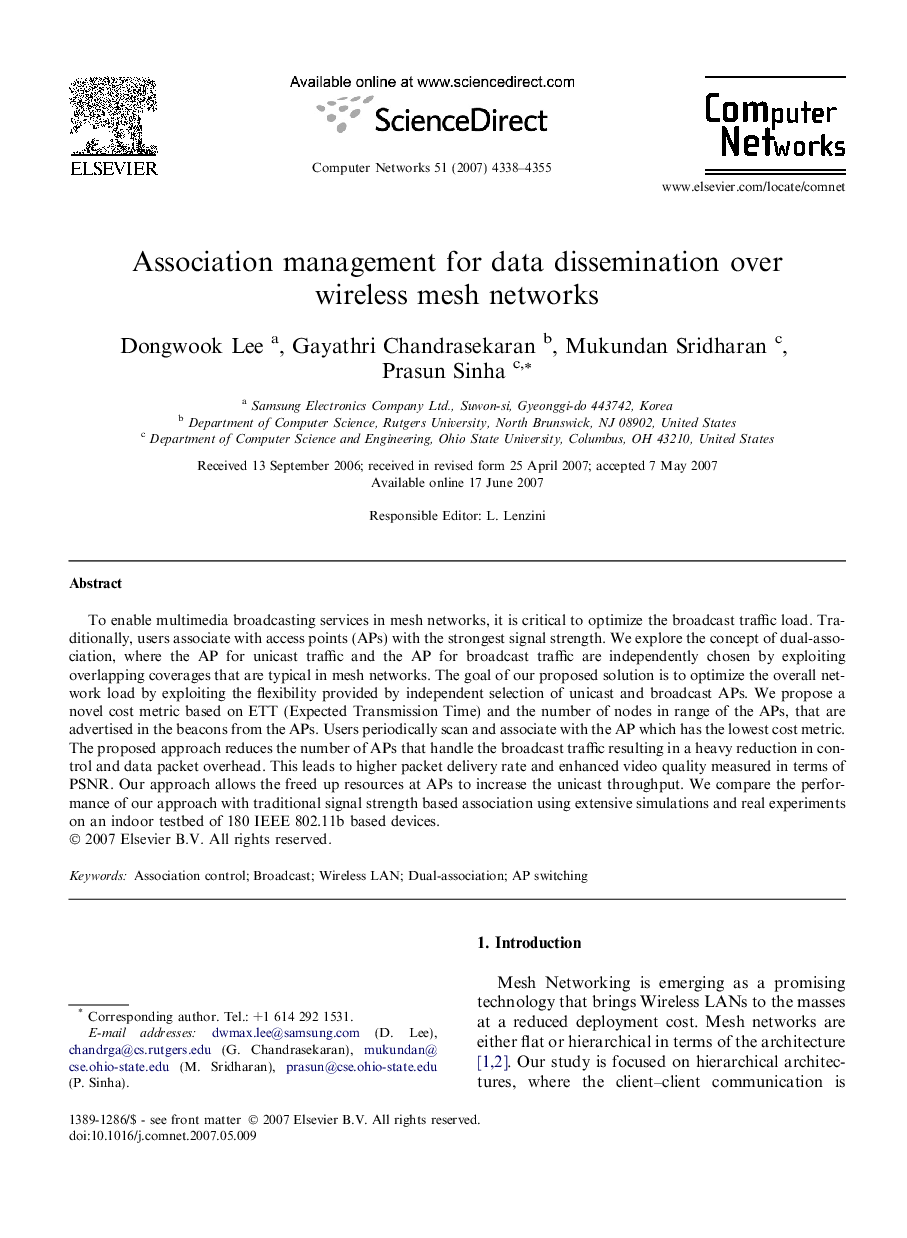| Article ID | Journal | Published Year | Pages | File Type |
|---|---|---|---|---|
| 451347 | Computer Networks | 2007 | 18 Pages |
To enable multimedia broadcasting services in mesh networks, it is critical to optimize the broadcast traffic load. Traditionally, users associate with access points (APs) with the strongest signal strength. We explore the concept of dual-association, where the AP for unicast traffic and the AP for broadcast traffic are independently chosen by exploiting overlapping coverages that are typical in mesh networks. The goal of our proposed solution is to optimize the overall network load by exploiting the flexibility provided by independent selection of unicast and broadcast APs. We propose a novel cost metric based on ETT (Expected Transmission Time) and the number of nodes in range of the APs, that are advertised in the beacons from the APs. Users periodically scan and associate with the AP which has the lowest cost metric. The proposed approach reduces the number of APs that handle the broadcast traffic resulting in a heavy reduction in control and data packet overhead. This leads to higher packet delivery rate and enhanced video quality measured in terms of PSNR. Our approach allows the freed up resources at APs to increase the unicast throughput. We compare the performance of our approach with traditional signal strength based association using extensive simulations and real experiments on an indoor testbed of 180 IEEE 802.11b based devices.
